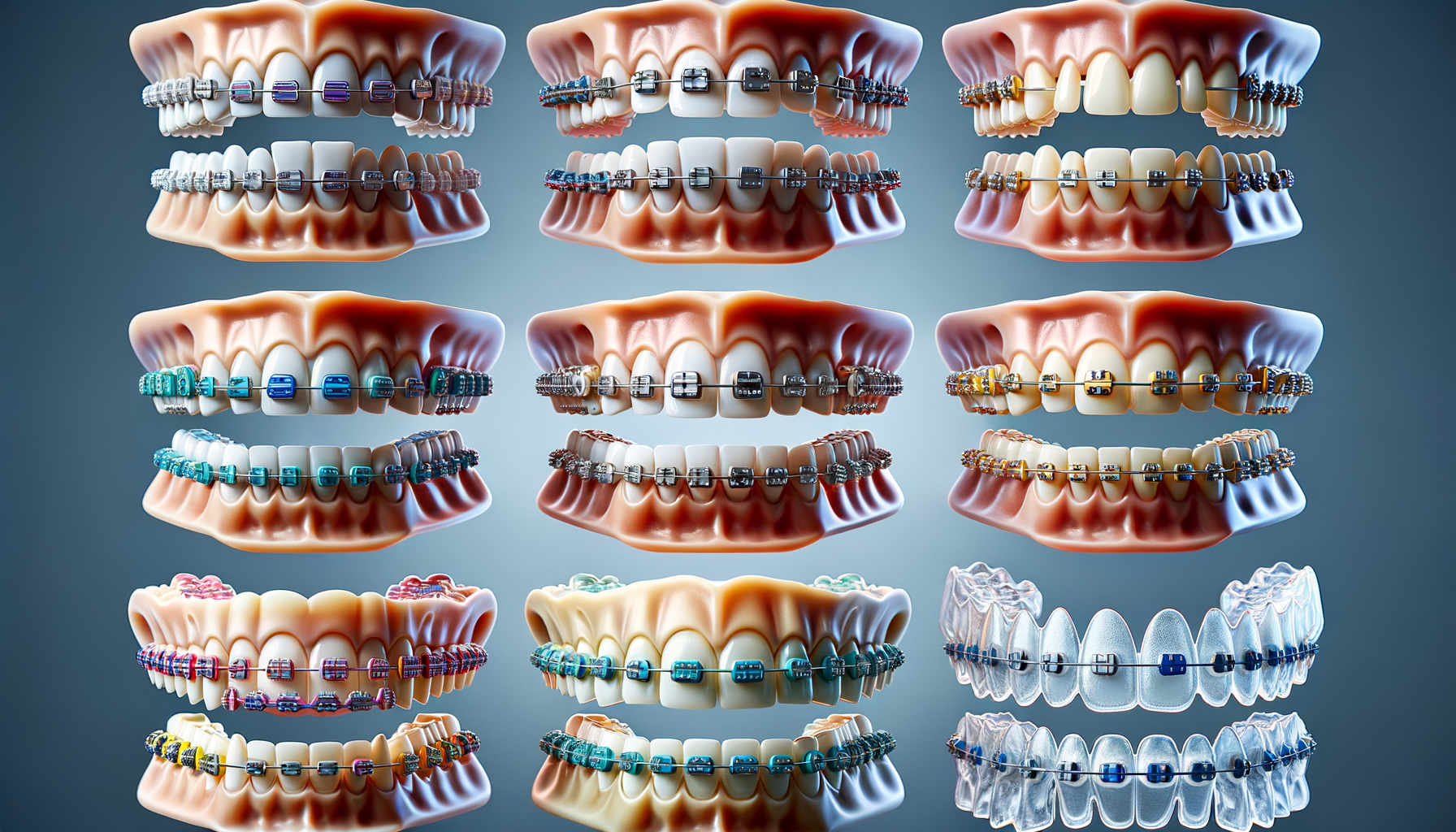
Types of Dental Braces to Explore at Every Age Group
Understanding Different Types of Dental Braces
Dental braces have long been a staple in orthodontic treatment, designed to correct misaligned teeth and improve oral health. Over the years, advancements in orthodontics have introduced a variety of braces that cater to different needs and preferences. Common types include traditional metal braces, ceramic braces, lingual braces, and clear aligners. Each type has its unique features, benefits, and considerations, making it essential to understand which might be suitable for you or your loved ones.
Traditional metal braces are perhaps the most recognizable, consisting of metal brackets and wires that gradually shift teeth into the desired position. They are highly effective and typically the most affordable option. Ceramic braces function similarly but are made from tooth-colored materials, making them less noticeable. Lingual braces are attached to the back of the teeth, offering an invisible option, though they can be more challenging to clean and may cause initial discomfort. Clear aligners, on the other hand, are removable and nearly invisible, offering a flexible and aesthetically pleasing alternative to fixed braces.
When choosing the type of braces, factors such as the severity of misalignment, lifestyle, and budget should be considered. Consulting with an orthodontist can provide valuable insights into which option aligns with your needs, ensuring a successful and comfortable treatment journey.
Braces for Kids: Starting Early for Long-Term Benefits
For children, early intervention with braces can lead to significant long-term benefits. The American Association of Orthodontists recommends that children have their first orthodontic evaluation by age seven. At this stage, orthodontists can identify potential issues, such as overcrowding or jaw misalignment, and determine if early treatment is necessary.
Braces for kids often focus on guiding the growth of the jaw and the incoming permanent teeth. Traditional metal braces are commonly used due to their effectiveness and durability. They can handle the robust dental movements required in young children. Additionally, colorful bands can make the experience more enjoyable for kids, allowing them to express their personality through their braces.
Early treatment can prevent more severe issues from developing, potentially reducing the need for more extensive treatment in the future. It can also improve the child’s self-esteem by addressing cosmetic concerns at an early age. Parents should ensure that their children maintain good oral hygiene and attend regular orthodontic appointments to monitor progress and make necessary adjustments.
Braces for Teenagers: Navigating the Teenage Years with Confidence
The teenage years are a common time for orthodontic treatment, as most permanent teeth have erupted by this age. Teenagers often have a variety of options when it comes to braces, allowing them to choose a style that fits their lifestyle and aesthetic preferences.
Metal braces remain a popular choice for teenagers due to their effectiveness and the ability to correct a wide range of dental issues. However, many teenagers opt for ceramic braces or clear aligners to minimize the visibility of their orthodontic treatment. Clear aligners are particularly appealing to teenagers who are conscious of their appearance, as they offer a discreet option that can be removed for eating and cleaning.
It’s crucial for teenagers to adhere to their orthodontist’s instructions, especially when using removable options like clear aligners. Consistency in wearing aligners is key to achieving the desired results. Regular orthodontic visits will ensure that the treatment is progressing as planned and allow for any necessary adjustments.
Braces can significantly impact a teenager’s confidence, helping them feel more comfortable with their smile. Encouraging teenagers to take an active role in their orthodontic care can foster a sense of responsibility and pride in their treatment journey.
Choosing the Right Braces: Factors to Consider
When deciding on the right type of braces, several factors come into play. These include the complexity of the dental issues, aesthetic preferences, lifestyle considerations, and budget constraints. Each type of brace offers unique advantages and limitations, making it essential to weigh these factors carefully.
For individuals with complex dental issues, traditional metal braces may be the most effective option due to their strength and ability to handle significant adjustments. Those seeking a more discreet option might consider ceramic braces or clear aligners. Ceramic braces blend with the natural tooth color, while clear aligners offer a nearly invisible solution.
Lifestyle considerations are also important. For active individuals or those involved in contact sports, the durability of metal braces can be beneficial. However, clear aligners offer the flexibility of removal, making them suitable for those who prefer minimal disruption to their daily routine.
Cost is another critical factor. Metal braces are generally the most cost-effective option, while ceramic braces and clear aligners tend to be more expensive. It’s important to discuss financial considerations with your orthodontist to find a solution that fits your budget.
Ultimately, the decision should be made in consultation with an experienced orthodontist who can provide personalized recommendations based on your specific needs and goals.
Conclusion: Embracing the Journey to a Healthier Smile
Choosing the right type of braces is a significant step towards achieving a healthier, more confident smile. Whether for a child, teenager, or adult, understanding the options available and considering individual needs can lead to a successful orthodontic journey. Each type of braces offers unique benefits, and with the guidance of a skilled orthodontist, you can embark on a path that aligns with your lifestyle and aspirations.
Orthodontic treatment is not just about aesthetics; it plays a crucial role in improving oral health and overall well-being. By addressing misalignment and bite issues, braces can prevent future dental problems and enhance one’s quality of life. Embrace the journey with patience and commitment, knowing that the results will be well worth the effort.
As you consider the options, remember that the journey to a healthier smile is a personal one, and the right choice will depend on individual circumstances. With the right support and guidance, you can achieve a smile that you can be proud of for years to come.